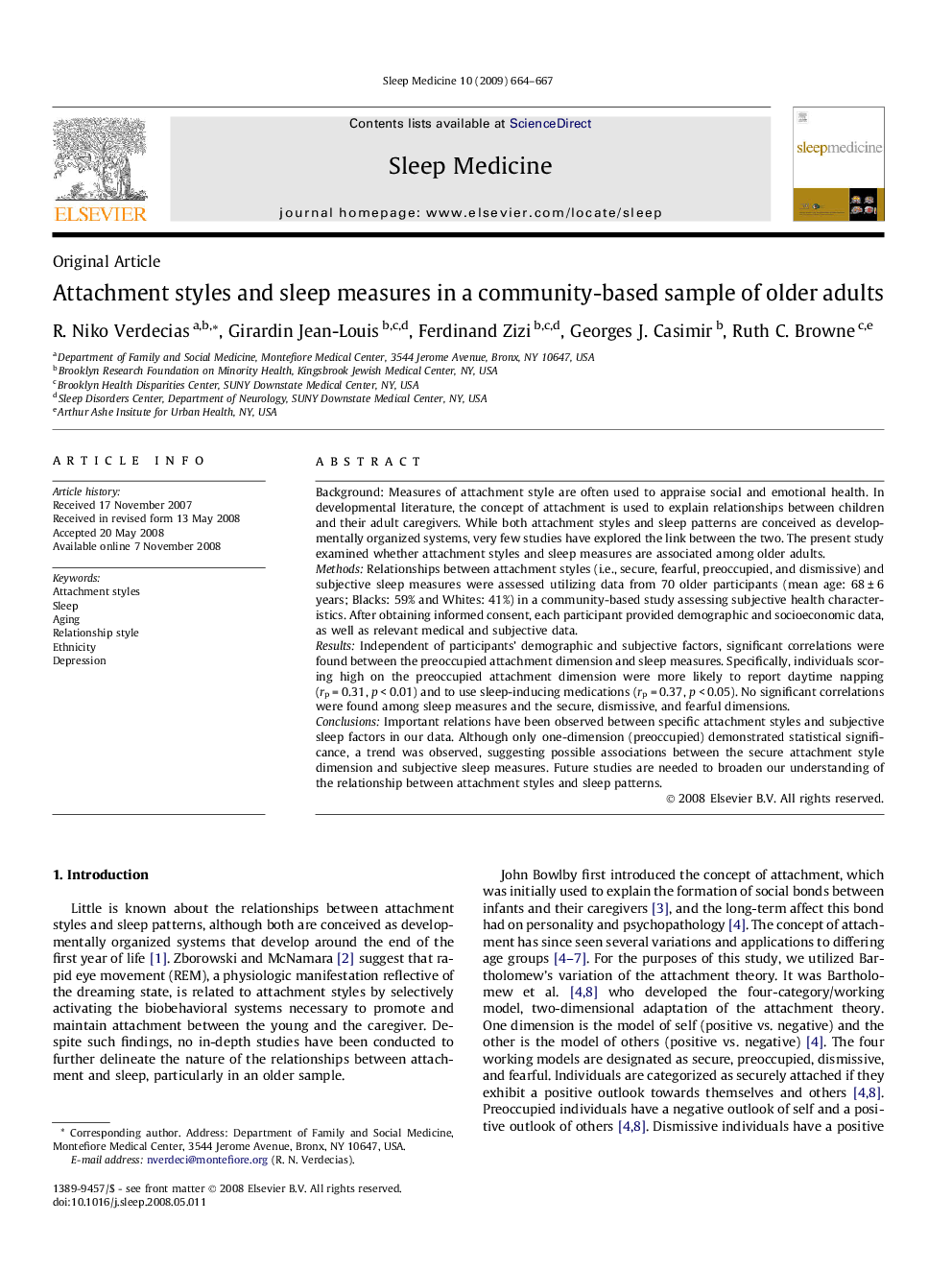| Article ID | Journal | Published Year | Pages | File Type |
|---|---|---|---|---|
| 3177595 | Sleep Medicine | 2009 | 4 Pages |
BackgroundMeasures of attachment style are often used to appraise social and emotional health. In developmental literature, the concept of attachment is used to explain relationships between children and their adult caregivers. While both attachment styles and sleep patterns are conceived as developmentally organized systems, very few studies have explored the link between the two. The present study examined whether attachment styles and sleep measures are associated among older adults.MethodsRelationships between attachment styles (i.e., secure, fearful, preoccupied, and dismissive) and subjective sleep measures were assessed utilizing data from 70 older participants (mean age: 68 ± 6 years; Blacks: 59% and Whites: 41%) in a community-based study assessing subjective health characteristics. After obtaining informed consent, each participant provided demographic and socioeconomic data, as well as relevant medical and subjective data.ResultsIndependent of participants’ demographic and subjective factors, significant correlations were found between the preoccupied attachment dimension and sleep measures. Specifically, individuals scoring high on the preoccupied attachment dimension were more likely to report daytime napping (rp = 0.31, p < 0.01) and to use sleep-inducing medications (rp = 0.37, p < 0.05). No significant correlations were found among sleep measures and the secure, dismissive, and fearful dimensions.ConclusionsImportant relations have been observed between specific attachment styles and subjective sleep factors in our data. Although only one-dimension (preoccupied) demonstrated statistical significance, a trend was observed, suggesting possible associations between the secure attachment style dimension and subjective sleep measures. Future studies are needed to broaden our understanding of the relationship between attachment styles and sleep patterns.
